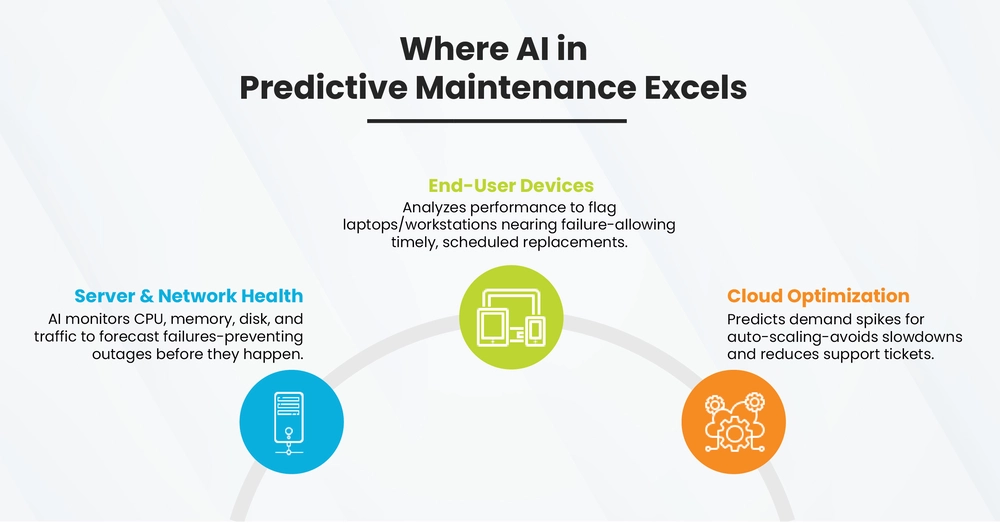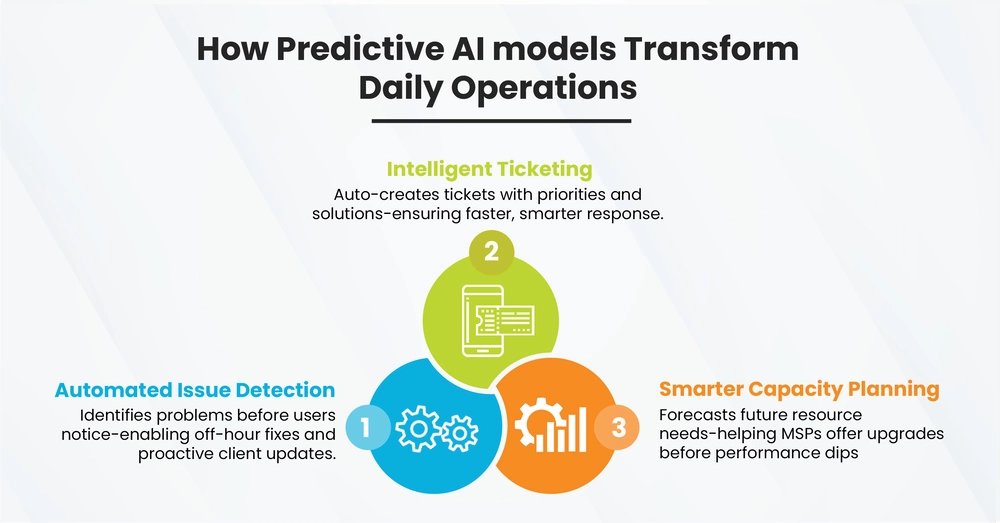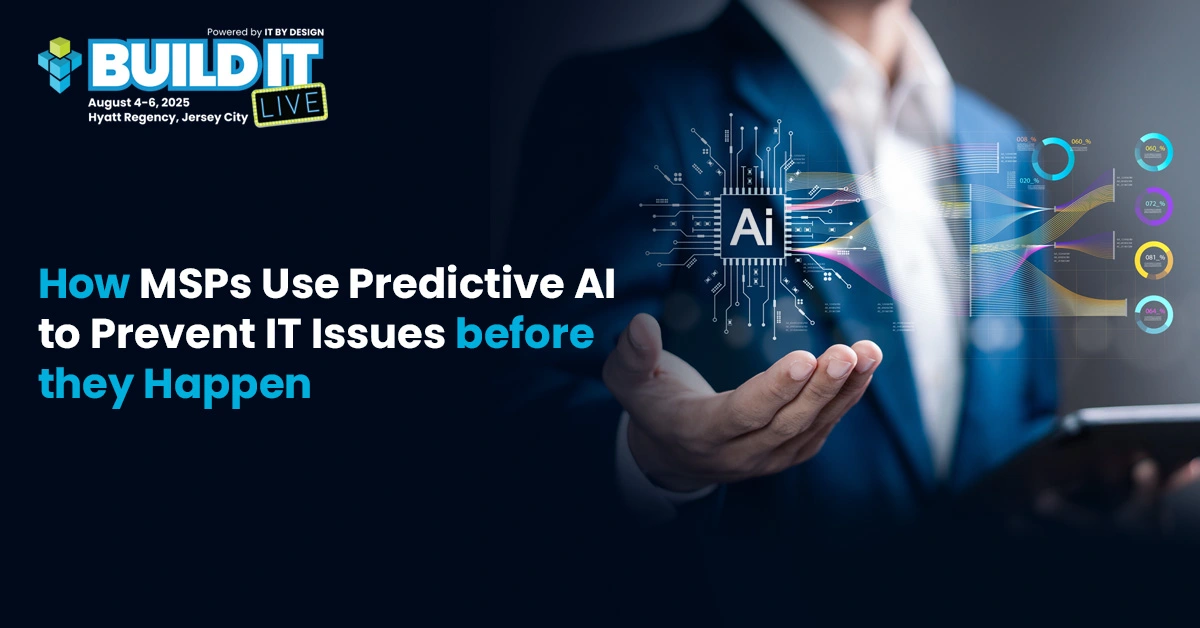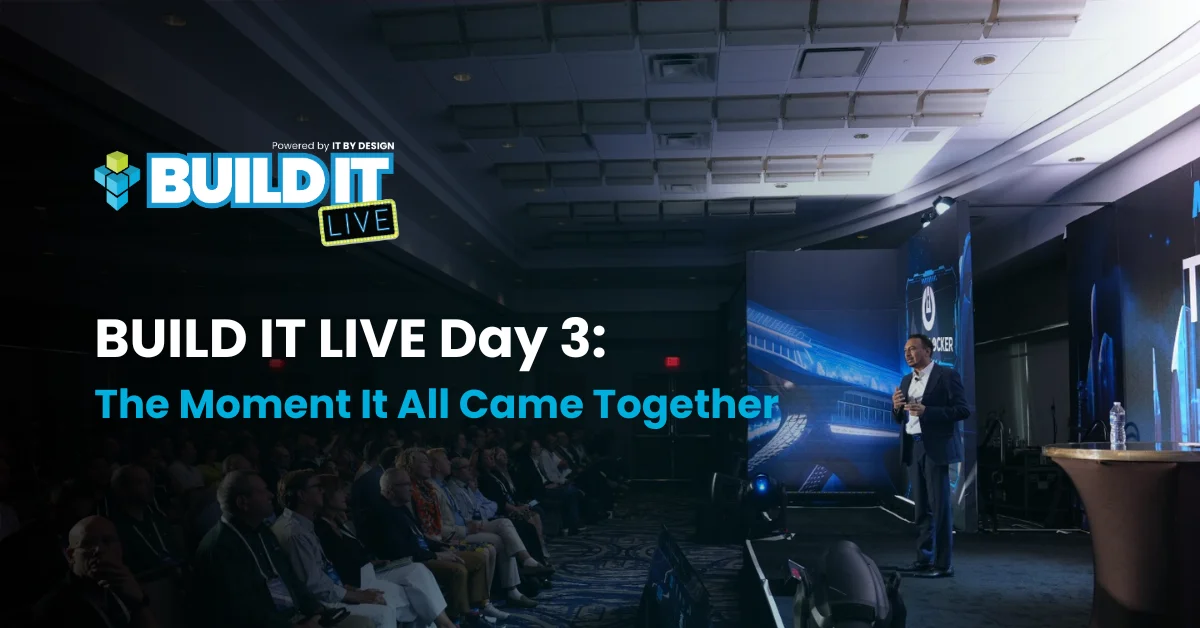Can predictive AI transform MSPs from firefighters to fire prevention?
The managed services landscape is undergoing a seismic shift. While traditional MSPs scramble to fix problems after they occur, forward-thinking providers are leveraging predictive AI to prevent issues before they impact clients.
Here’s the reality: reactive IT support is becoming obsolete. With median unplanned downtime costs greater than $100,000 per hour, businesses can’t afford to wait for problems to surface. They need MSPs who can see around corners and solve issues before they become catastrophes.
This transformation isn’t just about technology—it’s about fundamentally changing how MSPs deliver value. Instead of being the firefighters who respond to emergencies, predictive AI enables MSPs to become the strategic partners who prevent fires from starting in the first place.
What is predictive AI and why do MSPs need it now?
Predictive AI refers to artificial intelligence systems that analyze historical data, identify patterns, and forecast future events before they occur. For MSPs, this means spotting potential IT failures, security threats, and performance issues days or even weeks before they impact clients.
Unlike traditional reactive support models that respond to problems after they happen, predictive AI enables MSPs to take preventive action. Think of it as the difference between calling an ambulance after a heart attack versus monitoring vital signs to prevent the heart attack entirely.
The global predictive maintenance market grew to $5.5 billion in 2022—a growth of 11% from 2021—with an estimated CAGR of 17% until 2028, according to the Predictive Maintenance and Asset Performance Market Report 2023–2028.
The urgency for MSPs to adopt predictive AI has never been higher. As noted earlier, reactive support models are becoming financially unsustainable. Smart MSPs are realizing that prevention isn’t just better than a cure—it’s the only way to remain competitive.
What makes predictive AI different from generative AI?
Understanding predictive AI vs. generative AI is crucial for MSPs considering AI implementation. While generative AI creates new content (like ChatGPT writing emails), predictive AI forecasts future outcomes based on existing data.
For MSPs, predictive AI vs. generative AI represents different use cases entirely. Generative AI might help with client communication or documentation, but predictive AI models prevent business-critical failures. When comparing predictive AI vs. generative AI for MSP operations, predictive AI delivers direct ROI by preventing downtime and reducing emergency calls.
Here are key predictive AI examples that MSPs can implement immediately:
- Server failure prediction based on temperature and performance metrics
- Hard drive failure alerts using S.M.A.R.T. data analysis
- Network bandwidth spike forecasting to prevent bottlenecks
- Security threat detection through behavioral pattern analysis
- Software crash prediction using application performance monitoring
When should MSPs implement predictive AI solutions?
Timing is everything in the predictive AI game. The sweet spot for implementation hits when your reactive support costs start eating into profitability and client satisfaction scores begin dropping.
Let’s be honest—if you’re still getting those dreaded weekend emergency calls or watching clients express frustration about “surprise” outages, you’re already behind the curve. The market has shifted, and businesses now expect their MSPs to be fortune tellers, not just problem solvers.
When predictive maintenance AI becomes essential
Predictive maintenance AI becomes essential when scaling challenges overwhelm traditional monitoring approaches. As MSPs grow beyond 100 endpoints, manual monitoring becomes impossible and reactive support becomes unsustainable.
The tipping point often occurs when client expectations shift from accepting downtime to demanding 99.9% uptime. Modern businesses simply cannot afford unexpected failures, making predictive maintenance AI a competitive necessity rather than a luxury.
Successful implementation of managed services can reduce IT costs by 25% to 45% and boost operational efficiency by 45% to 65%, making the ROI case for predictive AI compelling.
Where predictive AI creates maximum impact for MSPs
Predictive AI delivers the highest ROI in specific areas where failure costs are most severe. Server infrastructure, network equipment, and end-user devices represent the biggest opportunities for AI MSP services to prevent costly downtime.
Industries with zero tolerance for downtime—healthcare, finance, manufacturing, and e-commerce—benefit most from predictive AI implementations. These sectors understand that prevention costs far less than the cure.
Where AI in predictive maintenance excels

Who benefits from predictive AI in MSP operations?
Every stakeholder in the MSP ecosystem benefits from predictive AI implementation. Technical teams shift from reactive firefighting to proactive problem-solving, dramatically improving job satisfaction and career development opportunities.
Client-side beneficiaries include IT directors who can report improved uptime metrics, CFOs who see reduced downtime costs, and end-users who experience fewer disruptions to their daily workflows.
Who should lead predictive AI implementation?
Successful predictive AI implementation requires leadership from multiple roles within the MSP organization. Technical teams need to understand predictive AI models and their data requirements, while client success managers must communicate the value proposition to existing clients.
Executive leadership drives strategic planning and budget allocation for predictive AI tools and training. Without C-level buy-in, predictive AI initiatives often fail due to insufficient resources or organizational resistance.
Why predictive AI drives client retention and revenue growth
Here’s where the rubber meets the road: predictive AI doesn’t just solve technical problems—it solves business problems. When you shift from reactive to proactive service delivery, everything changes.
Clients stop seeing you as a necessary evil and start viewing you as a strategic partner. They’re not just paying for fixes anymore; they’re investing in peace of mind. That psychological shift is pure gold for MSPs looking to escape the commodity pricing trap.
Why AI MSP services command premium pricing
AI MSP services command premium pricing because they deliver measurable business value. When predictive maintenance AI prevents a single hour of downtime, it can save clients hundreds of thousands of dollars.
The competitive differentiation becomes clear when prospects compare reactive MSPs with predictive AI providers. According to Gartner, the average cost of IT downtime is $5,600 per minute, making predictive AI a strategic investment rather than a technical enhancement.
How to implement predictive AI in your MSP practice
Implementation begins with data collection and analysis. Most MSPs already have goldmines of historical data in their RMM tools, PSA systems, and network monitoring platforms—they just haven’t been using it predictively.
Start with a pilot program focusing on your most critical clients and highest-risk infrastructure. Choose predictive AI tools that integrate with your existing tech stack to minimize disruption and maximize adoption rates.
How predictive AI models transform daily operations

Core implementation strategies
Successfully implementing predictive AI requires more than just buying new tools—it demands a fundamental shift in how your MSP operates. The following strategies will help you transition from reactive service delivery to proactive client partnerships that drive measurable results.
Reactive vs proactive: The cost reality
The financial case for predictive AI becomes obvious when comparing reactive versus proactive costs. Emergency after-hours support typically costs 3 to 5 times more than scheduled maintenance, not including client downtime expenses.
Predictive AI shifts MSPs from expensive emergency response to cost-effective prevention, improving both profitability and client satisfaction simultaneously.
Building predictive AI models that actually work
Successful predictive AI models require three components: quality data, appropriate algorithms, and continuous refinement. MSPs must collect baseline performance data for at least 30 to 60 days before predictive models become accurate.
Machine learning algorithms excel at pattern recognition, identifying subtle changes in system behavior that human technicians might miss. These patterns often indicate impending failures days or weeks before they occur.
Leveraging existing data sources
Most MSPs already collect the data needed for predictive AI through their existing tools:
- RMM platforms: performance metrics, error logs, and configuration changes
- PSA systems: historical ticket data and resolution patterns
- Network monitoring: bandwidth usage, latency, and availability metrics
- Security tools: threat detection and behavioral analytics
The key is aggregating this data into predictive AI tools that can identify patterns and forecast future issues.
Creating proactive support workflows
Predictive AI requires new workflows that emphasize prevention over reaction. These workflows include:
- Automated alert escalation based on predicted failure severity
- Preventive maintenance scheduling during planned maintenance windows
- Client communication protocols that explain predicted issues and remediation plans
- Risk assessment reporting that demonstrates prevented downtime value
Transform your MSP with predictive AI today
The transformation from reactive firefighter to proactive partner represents the future of managed services. MSPs who embrace predictive AI now will establish competitive advantages that become increasingly difficult to replicate.
When predictive maintenance AI prevents downtime and demonstrates clear ROI, clients don’t just stay—they become advocates. The technology exists, the ROI is proven, and client demand is growing. The question isn’t whether to implement predictive AI, but how quickly you can get started.
Ready to revolutionize your MSP operations with predictive AI? Come to Build IT LIVE 2025!
Build IT LIVE specializes in helping MSPs implement predictive AI models and proactive support workflows that drive client retention and revenue growth.
Register for Build IT LIVE today and learn how predictive AI can transform your MSP into a proactive powerhouse that clients never want to leave.
Frequently asked questions (FAQs)
Q: What’s the difference between predictive AI and traditional monitoring?
A: Traditional monitoring alerts you after problems occur, while predictive AI forecasts issues before they happen, allowing preventive action instead of reactive response.
Q: How much does predictive AI implementation cost for MSPs?
A: Implementation costs vary based on client size and complexity, but the ROI typically pays for itself within 6 to 12 months through prevented downtime and reduced emergency calls.
Q: Can small MSPs benefit from predictive AI?
A: Absolutely! Predictive AI tools are increasingly accessible and affordable, with many solutions designed specifically for smaller MSPs with limited technical resources.
Q: How accurate are predictive AI models?
A: Well-trained predictive AI models achieve 85 to 95% accuracy in forecasting IT failures, dramatically reducing false positives while catching genuine issues early.
Q: What data do I need to start using predictive AI?
A: Most MSPs already collect sufficient data through RMM tools, PSA systems, and network monitoring—the key is aggregating and analyzing this existing information effectively.






